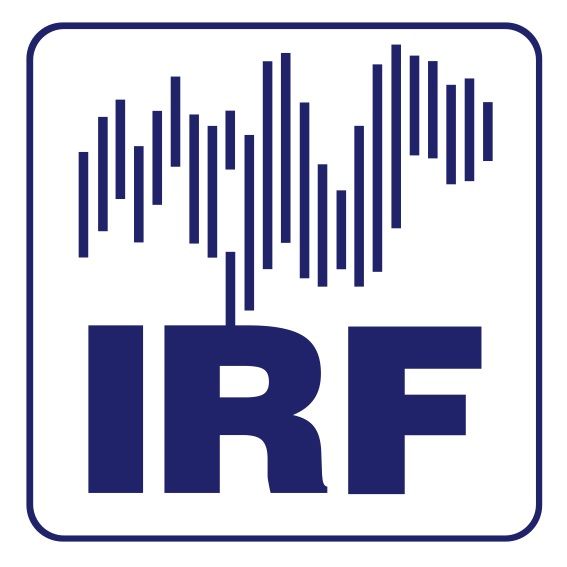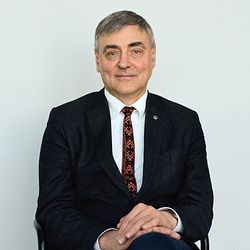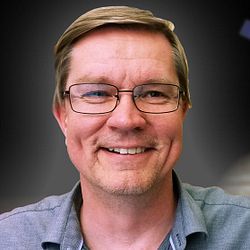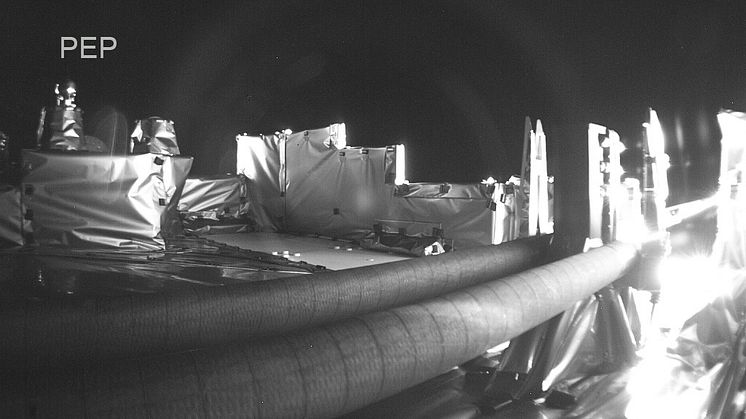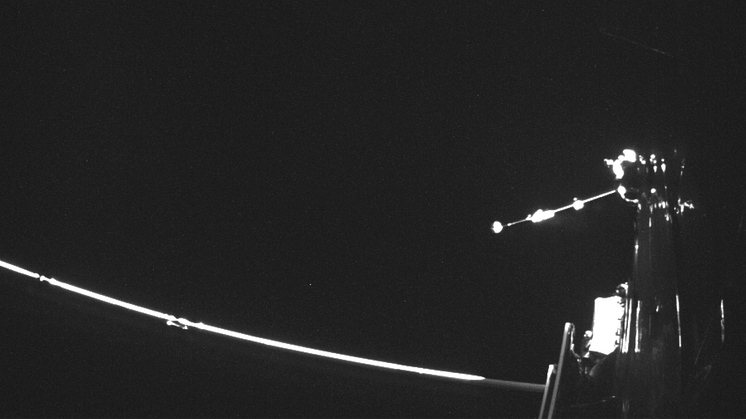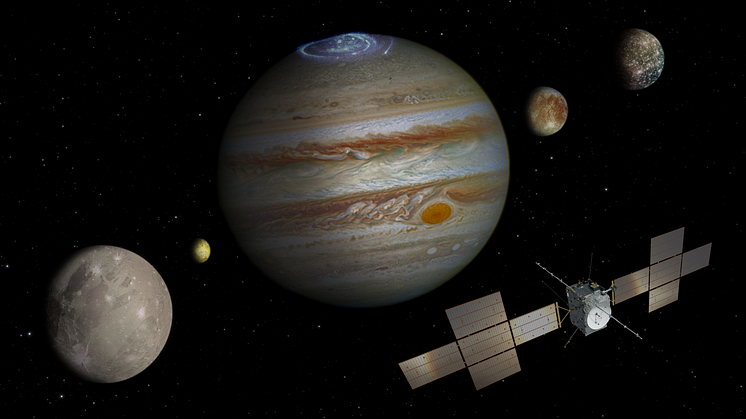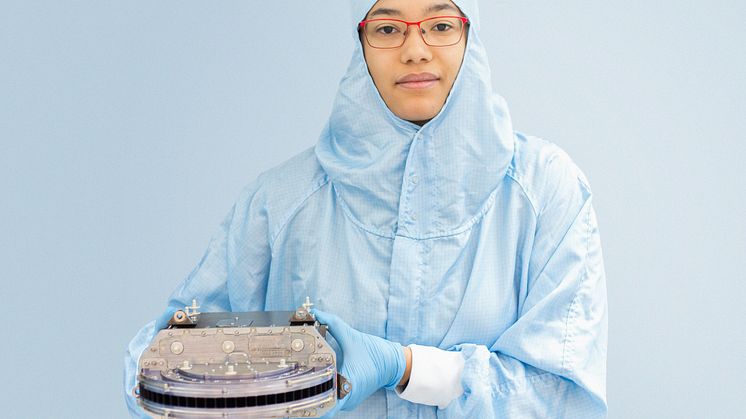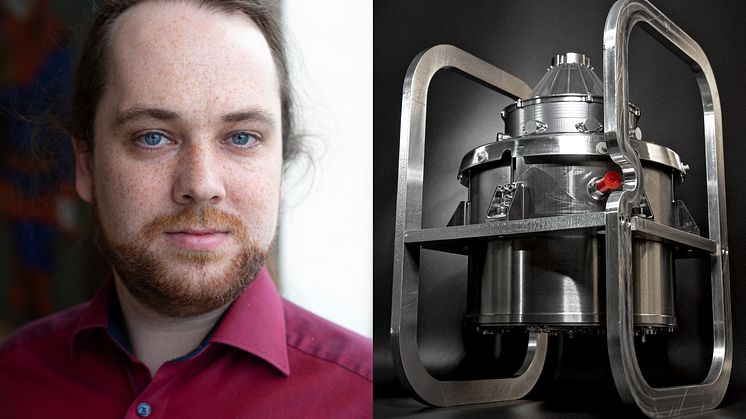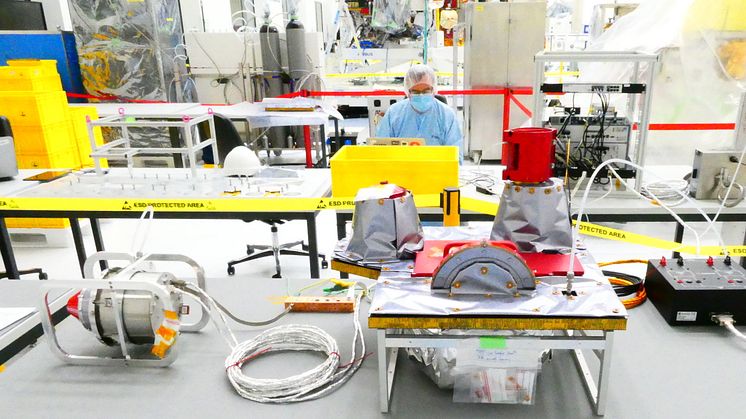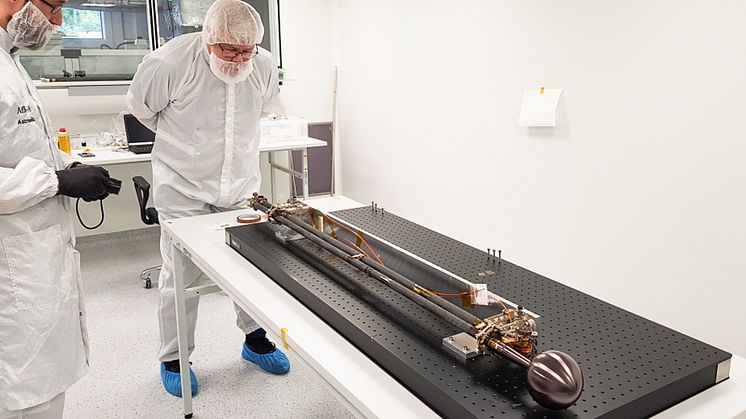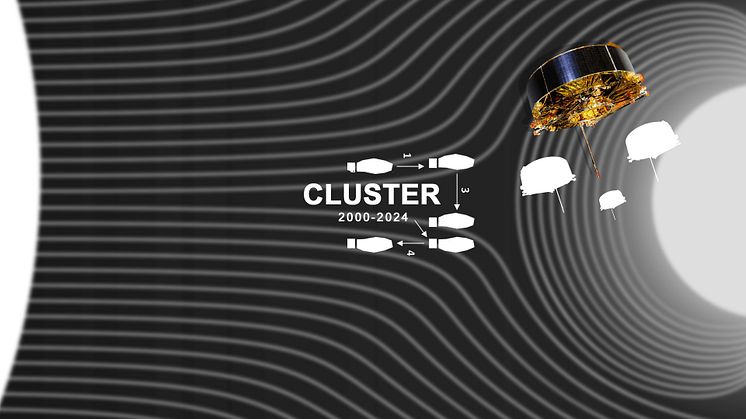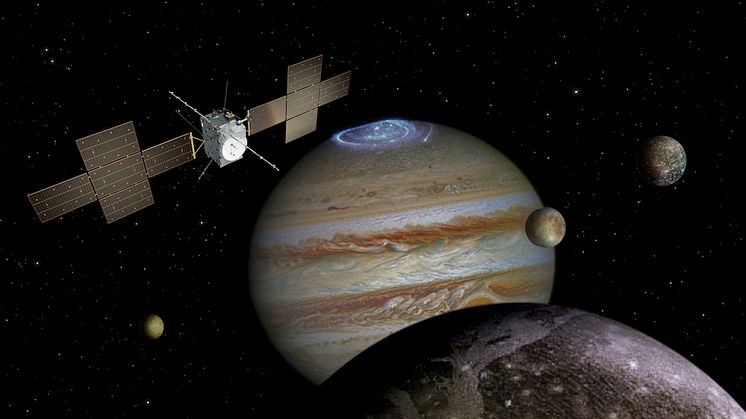
Pressmeddelande -
Juice tar hjälp av månen och jorden på Jupiterfärden – svenska instrument i drift / Juice towards the first of its kind Moon-Earth flyby - Swedish instruments in operation
Den 19-20 augusti kommer Juice, som första rymdsond någonsin, att använda månen och 1,5 dagar senare jorden, för gravitationsassistans. Med förbiflygningarna sparar Juice en stor mängd bränsle för den resterande resan till Jupiter som nås i juli 2031. Institutet för rymdfysik (IRF) kommer att ha sina instrument i drift under förbiflygningarna.
Juice påbörjade sin åtta år långa resa mot Jupiter och de tre istäckta månarna Europa, Ganymedes och Callisto den 14 april 2023 och den europeiska rymdorganisationen ESA har i detalj planerat hur rymdsonden ska färdas.
De två täta förbiflygningarna av månen och jorden kommer att ge Juice den extra energi, i form av gravitationsassistans, som rymdsonden behöver för att slungas vidare på sin färd. Förbiflygningar är planerade även av Venus i augusti 2025, jorden i september 2026 och jorden under 2029.
Planerade mätningar för IRF:s instrument
För IRF, som ansvarar för två av de tio instrumentpaketen ombord på Juice, innebär förbiflygningarna värdefulla instrumentkalibreringar för instrumentpaketen Particle Environment Package (PEP) och Radio and Plasma Wave Investigation (RPWI).
Stas Barabash är IRF-forskare i Kiruna med ansvar för PEP.
”Fyra av PEP:s sex partikelinstrument kommer att genomföra mätningar vid förbiflygningen av månen och jorden för att kalibrera instrumenten mot deras rymdmiljö. Mättningar vid månen är särskilt intressanta för IRF. Det pågår en ny rymdkapplöpning och att studera och förstå månen är ett strategiskt viktigt mål för institutet för att fortsatt vara en världsledande rymdforskningsorganisation", säger han.
Exempelvis kommer det Kirunabyggda PEP-instrumentet Jovian plasma Dynamics and Composition analyzer (JDC) att mäta tunga joner från månen med en hög massupplösning medan ett annat PEP-instrument kommer ha fokus på elektronerna i mån-miljön.
Förbiflygningen av jorden innebär att flera av PEP-instrumenten får möjligheten att kalibrera dess mätsensorer mot jordens strålningsbälten. Det blir första och sista chansen som mätsensorerna utsätts för en strålningsmiljö innan de når Jupiter som har den mest extrema strålningsmiljön i solsystemet.
Jan-Erik Wahlund är IRF-forskare i Uppsala med ansvar för RPWI.
”RPWI har tio sensorer på master och antenner och fyra olika instrument för att mäta rymdplasma samt elektriska och magnetiska fält i tre dimensioner. Flertalet funktioner hos RPWI kommer att testas både kring månen och jorden men även senare i solvinden. Framför allt hoppas vi mäta stoft kring månen och månytans ledningsförmåga”, säger han.
När Juice flyger förbi jorden är planen att RPWI ska motta radiovågor från jorden via anläggningen High-frequency Active Auroral Research Program, HAARP, i Alaska. Förhoppningen är även att riktningen till radiostrålning från norrsken kan bestämmas för att kalibrera instrumentpaketet ytterligare inför de mätningar som väntar vid Jupiter.
Mer information:
IRF: https://www.irf.se/sv/irf-i-ry...
ESA (eng):
https://www.esa.int/Science_Exploration/Space_Science/Juice
https://www.esa.int/Science_Exploration/Space_Science/Juice/Juice_s_lunar-Earth_flyby_all_you_need_to_know
https://www.esa.int/Science_Exploration/Space_Science/Juice/Juice_lunar-Earth_flyby_media_kit
Kontakt:
Professor Stas Barabash, Institutet för rymdfysik, Kiruna, ansvarig för Particle Environment Package (PEP)
stas.barabash@irf.se
070- 217 8586
Docent Jan-Erik Wahlund, Institutet för rymdfysik, Uppsala, ansvarig för Radio and Plasma Wave Investigation (RPWI)
jan-erik.wahlund@irfu.se
076- 7697 877
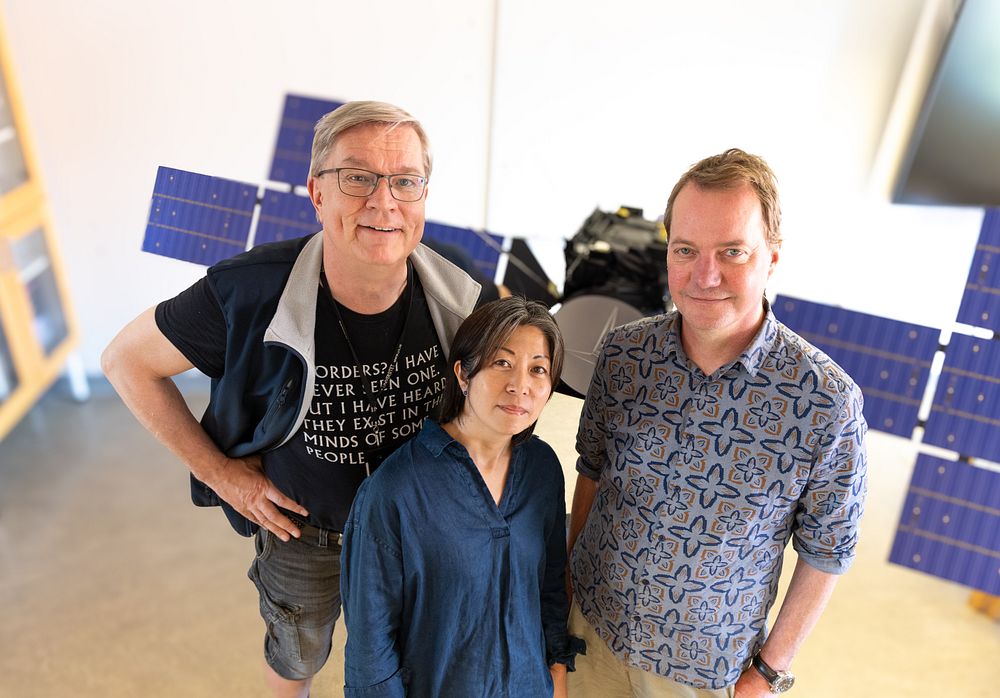
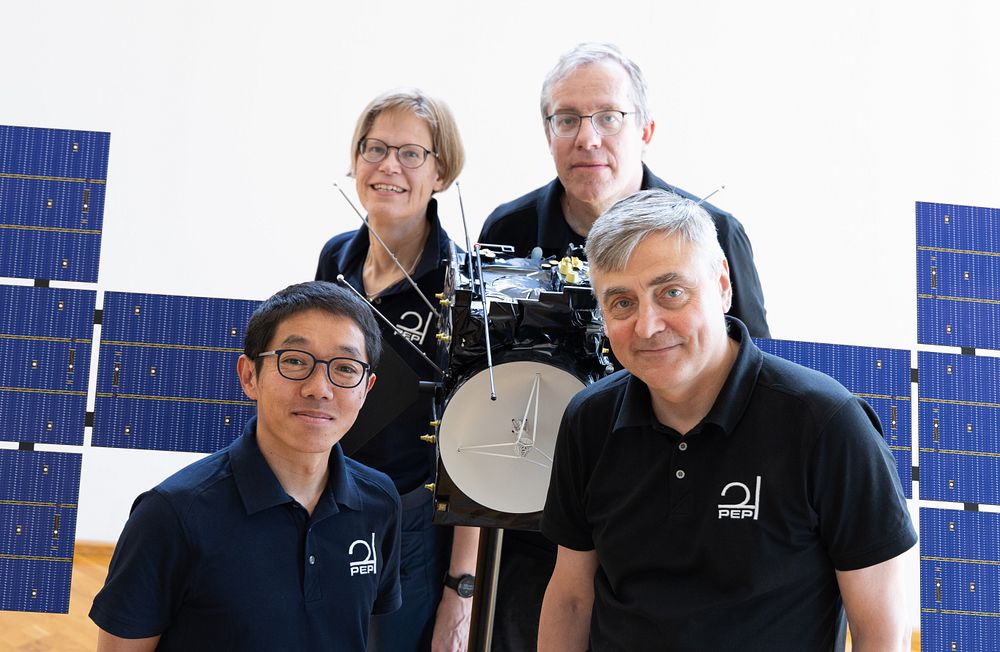
*** ENG ***
On August 19-20, Juice, as the first spacecraft ever, will use the Moon and 1.5 days later the Earth, for gravity assistance. With the flybys, Juice saves a large amount of fuel for the remaining journey to Jupiter which will be reached in July 2031. The Swedish Institute of Space Physics (IRF) will have its instruments operating during the flybys.
Juice began its eight-year journey towards Jupiter and the three icy moons Europa, Ganymede and Callisto on April 14, 2023, and the European Space Agency ESA has planned in detail how the spacecraft will travel.
The two close flybys of the Moon and Earth (Lunar-Earth gravity assist, LEGA) will give Juice the extra energy that the spacecraft needs to propel itself on its journey. Flybys are also planned of Venus in August 2025, Earth in September 2026 and Earth in 2029.
Planned measurements for IRF's instruments
For IRF, which is responsible for two of the ten instrument packages on board Juice, the flybys mean valuable instrument calibrations for the Particle Environment Package, (PEP) and Radio and Plasma Wave Investigation, (RPWI) instrument packages.
Professor Stas Barabash, IRF scientist in Kiruna, is Principal Investigator for PEP.
”Four of PEP's six particle instruments will conduct flyby measurements of the Moon and Earth to calibrate the instruments against their space environment. Measurements at the Moon are of particular interest to IRF. A new space race is ongoing and studying and understanding the Moon is a strategically important goal for the institute to continue to be a world-leading space research organization”, he says.
For example, the Kiruna-built PEP instrument Jovian plasma Dynamics and Composition analyzer (JDC) will measure heavy ions from the Moon with a high mass resolution, while another PEP instrument will focus on the electrons in the lunar environment.
The flyby of the Earth means that several of the PEP instruments get the opportunity to calibrate its measurement sensors against the Earth's radiation belts. It will be the first time that the measurement sensors are exposed to a radiation environment before reaching Jupiter, which has the most extreme radiation environment in the solar system.
Assoc. prof. Jan-Erik Wahlund, IRF scientist in Uppsala, is Principal Investigator for RPWI.
”RPWI has ten sensors on masts and antennas and four different instruments to measure space plasma and electric and magnetic fields in three dimensions. Most of the functions of RPWI will be tested both around the Moon and the Earth, but also later in the solar wind. Above all, we hope to measure dust around the moon and the conductivity of the lunar surface”, he says.
When Juice flies past Earth, the plan is for RPWI to receive radio waves from Earth via the High-frequency Active Auroral Research Program, HAARP, facility in Alaska. Hopefully the direction of radio radiation from the aurora borealis can also be determined to further calibrate the instrument package for the measurements that await at Jupiter.
More information:
IRF: https://www.irf.se/en/irf-in-s...
ESA:
https://www.esa.int/Science_Exploration/Space_Science/Juice
https://www.esa.int/Science_Exploration/Space_Science/Juice/Juice_s_lunar-Earth_flyby_all_you_need_to_know
https://www.esa.int/Science_Exploration/Space_Science/Juice/Juice_lunar-Earth_flyby_media_kit
Contact:
Professor Stas Barabash, Swedish Institute of Space Physics, Kiruna, Principle Investigator for Particle Environment Package (PEP)
stas.barabash@irf.se
+46 70- 217 8586
Assoc. Prof., Jan-Erik Wahlund, Swedish Institute of Space Physics, Uppsala, Principle Investigator for Radio and Plasma Wave Investigation (RPWI)
jan-erik.wahlund@irfu.se
+46 76- 7697 877


Ämnen
Kategorier
Institutet för rymdfysik, IRF, är ett statligt forskningsinstitut under Utbildningsdepartementet. IRF bedriver grundforskning och forskarutbildning i rymdfysik, atmosfärfysik och rymdteknik. Mätningar görs i atmosfären, jonosfären, magnetosfären och runt andra planeter med hjälp av ballonger, markbaserad utrustning (bl a radar) och satelliter. För närvarande har IRF instrument ombord på satelliter i bana runt två planeter: jorden och Mars. Dessutom instrument på baksidan av månen samt i bana runt solen. Instrument är även på väg till Merkurius och Jupiter. IRF har ca 100 anställda och bedriver verksamhet i Kiruna (huvudkontoret), Umeå, Uppsala och Lund.
* * * * * * * * * * * *
The Swedish Institute of Space Physics (IRF) is a governmental research institute which conducts research and postgraduate education in atmospheric physics, space physics and space technology. Measurements are made in the atmosphere, ionosphere, magnetosphere and around other planets with the help of ground-based equipment (including radar), stratospheric balloons and satellites. IRF was established (as Kiruna Geophysical Observatory) in 1957 and its first satellite instrument was launched in 1968. The head office is in Kiruna (geographic coordinates 67.84° N, 20.41° E) and IRF also has offices in Umeå, Uppsala and Lund.
